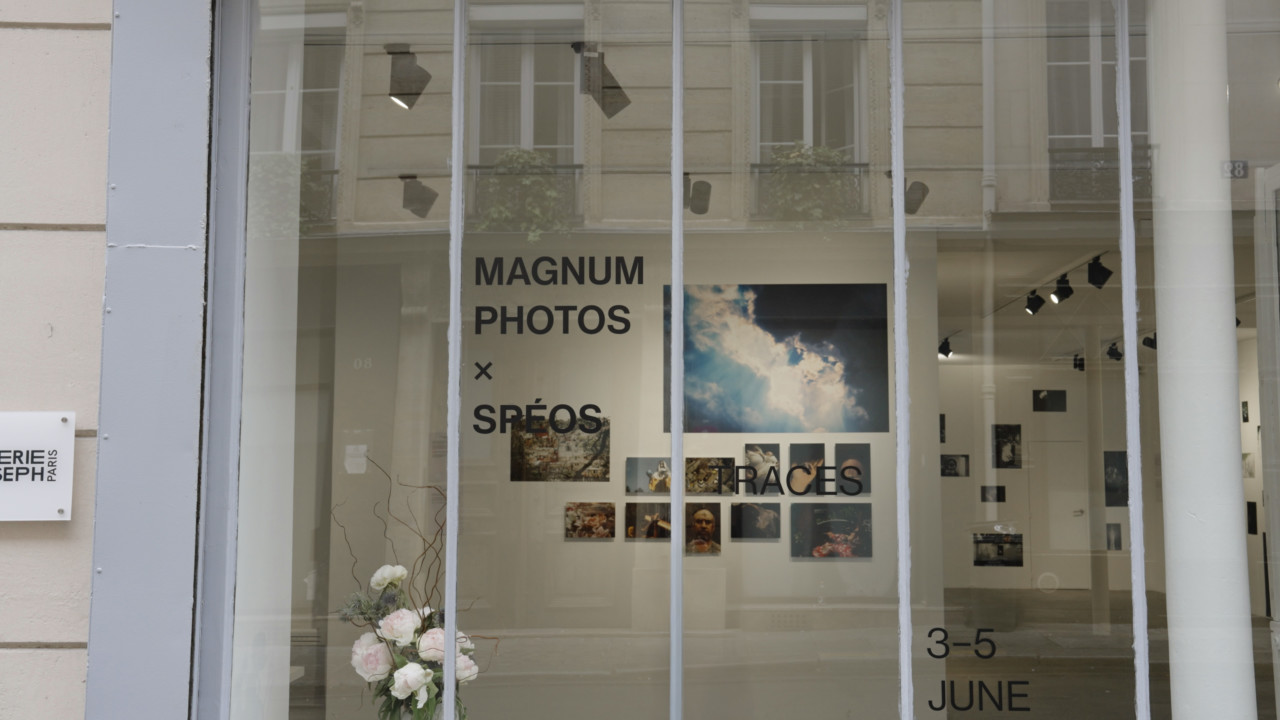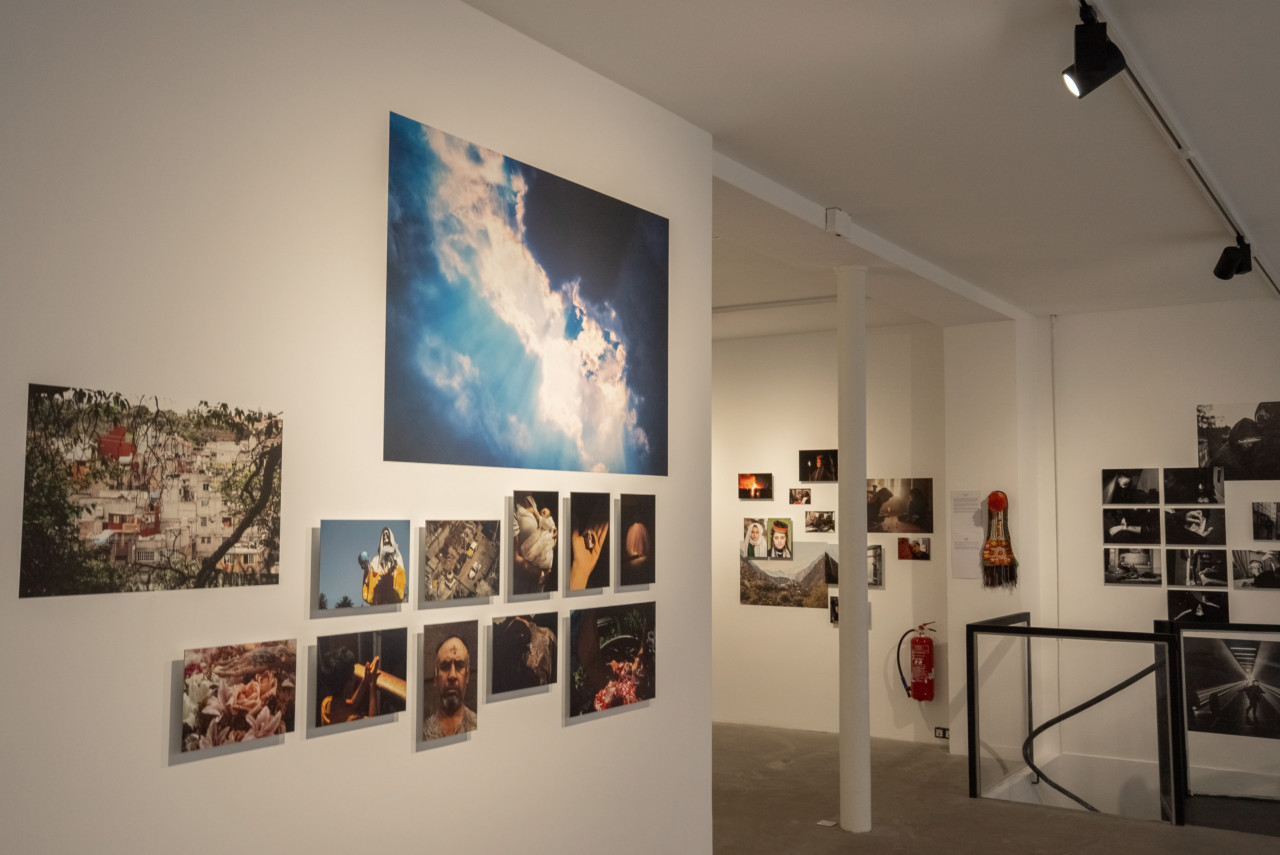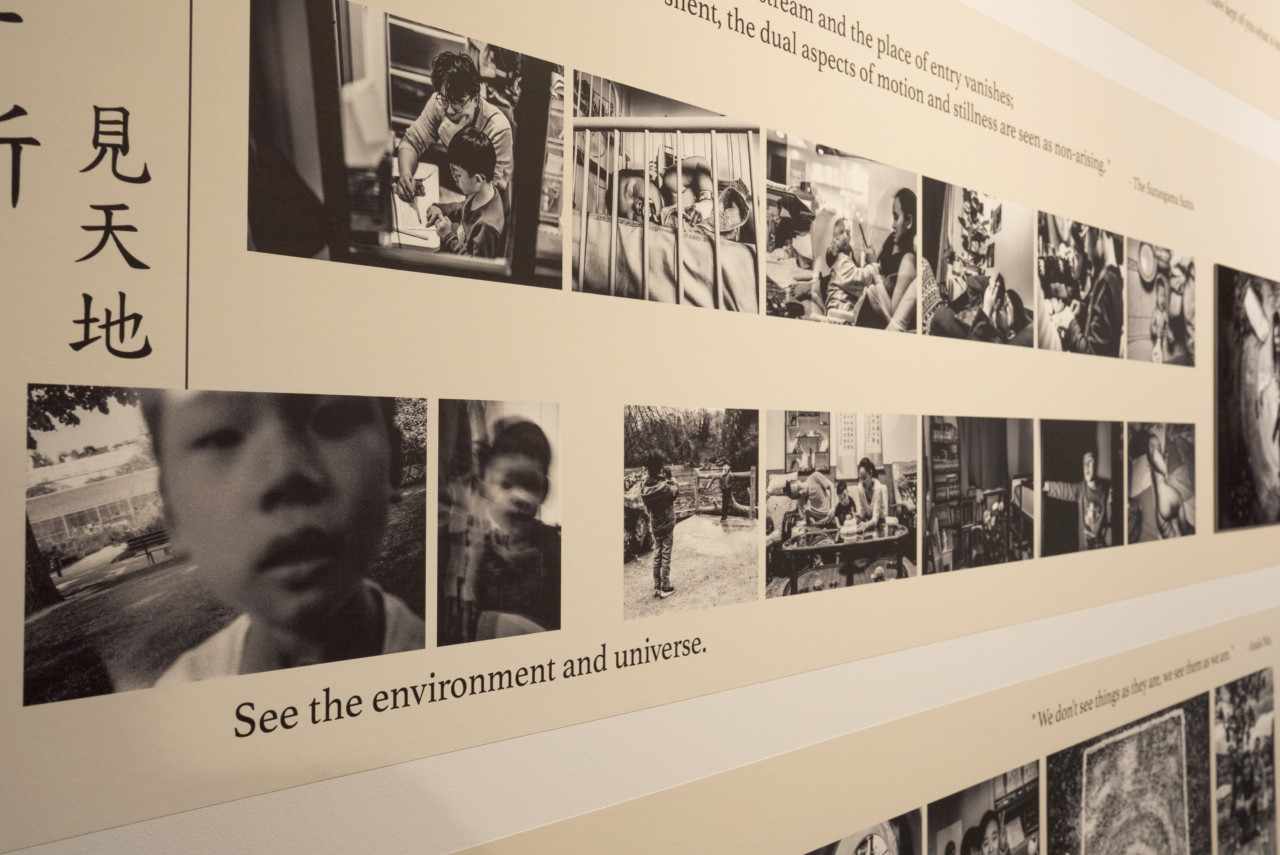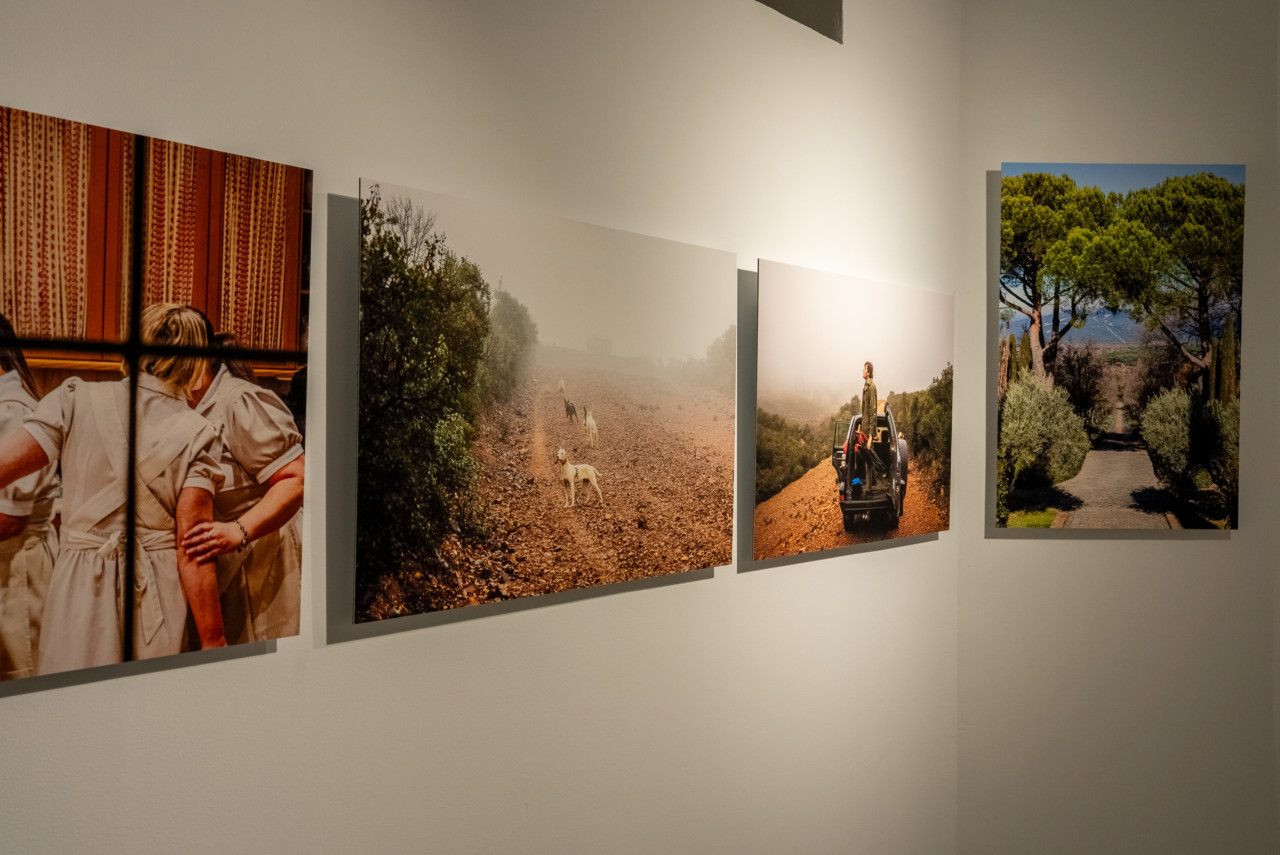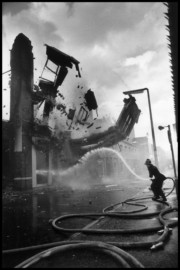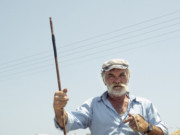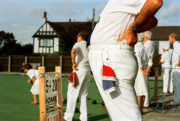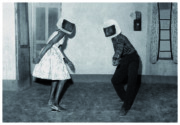The New SPEOS and Magnum Graduates Class of 2025
Meet the 13 graduates from this year’s Creative Documentary & Photojournalism class, run by Magnum and Spéos School of Photography
Magnum and Spéos School of Photography are pleased to present the 2024-2025 graduates of the Creative Documentary Program.
Applications are open for the upcoming program, starting September 2025 in Paris. Learn more here. If you have questions, feel free to email education@magnumphotos.com and we will be happy to organize a call to discuss the details.
Since September 2024, this year’s international cohort has been deeply immersed in documentary photography, guided by Magnum photographers Stuart Franklin, Lúa Ribeira and Myriam Boulos, along with other professionals in the field. From lighting and printing techniques to understanding the ins and outs of the profession, the intensive 9-month program in Paris is designed to develop students’ skills in photojournalism, visual storytelling, and portfolio production. This framework equips them with the essential tools for embarking on a career in photography.
Over the course of the program, the students work on a personal project from research to completion. To mark the end of the course, these 13 graduates are presenting their work in a group exhibition called “Traces,” curated by photographer Robert Hyde, from June 3-5 at Galerie Joseph in Paris. Here, the students describe their work and process in their own words.
Marta Abelló: El Campo
“This project is a personal story about what is most important and dear to me: my family. […] I found it interesting to use my camera to create distance—sitting back and observing an everyday scene I’ve grown up with so closely and allowing myself to see it from a new, detached perspective. I’ve had to fight my shyness when capturing intimate moments — something I’ll probably always face in my photography, as I am most drawn to photographing people I am close to.”
@martaa.abello
David Bang: Silent Witness
“This project captures the fleeting moments and quiet spaces shaped by the Seine’s passage. The river moves ceaselessly, brushing against everything in its path but never holding on. Rather than documenting the city’s noise, this work traces the remnants left behind where the water once flowed. [..] The project pays tribute to those who sought to capture the ephemeral. The Impressionists followed shifting light and color along these paths; here, the traces of disappearance are recorded in black and white — a quiet testament to what endures within the flow. The Seine flows on, a silent witness to all. These photographs preserve what it remembers.”
@daveb_binoculars
Heng Duan: Am I a Tree?
“The project is deeply influenced by Alberto Caeiro, the heteronym of Fernando Pessoa. Caeiro wrote, ‘If things are what they appear to be, why question them?’ This philosophy runs through the heart of the series. The trees in these images are not metaphors for endurance, time or transformation; they simply exist. And yet, in their presence, something is revealed — not in what they represent, but in how they are perceived.”
@wfffawdwdw
Camila Faraci: My Heart Pumps Magma
“Everything around us and everything we are is made of the same thing: atoms. Invisible, identical, always in motion. Depending on how they’re arranged, they form the reality we perceive. When they interact, they can become entangled, meaning their states remain linked across any distance. […] We are, at our core, just atoms. So, if we share the same essence then why is there so much inequality among us?”
@faraci.cam
Souraya Jureidini: What Remains
“For many, being Lebanese means growing up knowing that leaving is inevitable — a truth I’ve come to know well. A decade abroad fractured my sense of self, leaving me caught between worlds, uncertain of where I belong. This work documents my return, a journey through both the familiar and the foreign. In coming back, I honor my roots and pay tribute to Lebanon’s indestructible spirit: from the order within chaos to the roughness and tenderness. Going back carries tension between the comfort and connection that only home can offer, and the lingering dissociation that, at times, makes this place feel incomprehensible. Yet it is in this paradox that I find my way back to what feels like home.”
@sourayajureidini
Ding Herng Lee: A Testimony for Dear
“I cannot recall clearly enough how my childhood was. There are only fragments and scattered impressions left, yet somehow, across these years, I began to recognize myself through the hints and traces I’ve accumulated with my camera since the birth of my nephews. […] Through photographing them, they revealed to me the shape of memories I thought I had lost, memories that never fully formed. And I saw how those memories, even in absence, had continued to shape me. Before I knew it, Mathys and Théo became the gravity of my life. When I was lost, I found them, and in doing so, I began to find myself. Over time, the images became more than just moments. They became testimonies.”
@dhlee_photo
Bert Meyer: Room for Encounter
“A temporary studio takes shape on the pavement near the Château d’Eau metro station in Paris — not behind closed doors, but in the midst of city life. A neutral backdrop, a camera, a flash — and then I wait. I don’t approach anyone. I don’t impose myself. I wait for someone to take the first step. Only then does a space emerge where encounters happen freely — grounded in trust and dignity. […] I lived and worked in Cameroon and Malawi for many years – first as a craftsman, later in project work. […] When I meet people with African roots at the Château d’Eau metro station, whose cultural background is familiar to me, I don’t feel like a stranger. Rather, I recognize something that is deeply rooted in me.”
@realbertmeyer
Christian Moorman: The Sigh of History
“The sigh of History rises over ruins, not over landscapes, and in the Antilles there are few ruins to sigh over, apart from the ruins of sugar estates and abandoned forts.” – Derek Walcott
“This project documents the work and lives of Guyana’s sugar cane cutters — heirs, in their role, of generations of slaves and indentured servants. While Guyana has moved on from its colonial past, little has changed for its cane cutters since the colonial era. They use the same tools and techniques that were used in the 19th century, and are paid very little for the backbreaking, essential work they do. […] This project aims to document the labor and the laborers that have been at the core of the Guyanese sugar industry for nearly 400 years, and the dignity with which they face the exploitation that they are subject to.”
@cdavism410
Alejandra Quintana: Se que la de arriba nunca me olvida
“I grew up in Mexico, yet for a long time, I didn’t really know what La Santa Muerte was. For most of my life, I saw her with fear. Her image felt threatening — something you were supposed to stay away from. But then I started noticing the people who believed in her. Not criminals or fanatics like I had imagined, but kind, spiritual, generous people who didn’t want to hurt anyone. That changed everything for me. I began to wonder why they turned to her, what they found in her presence, and how a figure so feared could also feel so full of love.”
@snapquish
Jia She: If Dreams Are Real, Let’s Stay Asleep
“Jia She’s project explores the fluid boundary between memory and reality, where the act of recalling the past reshapes the present. By weaving fragmented memories into representations of real life, she constructs a space where fiction and reality coexist, overlap, and blur. In this process, memories are not merely recollections, but factors that influence how reality is perceived and understood.”
@iiisheiii
Laura Riis: Faith in Transition (see opening image)
“Set in Northwest Pakistan, this project explores the intimate reality of religious conversions within a small indigenous community, balancing animism and Islam. For centuries, the Kalash have lived in the remote Hindu Kush mountains, their traditions woven into rituals of dance, color, and fire. Yet, with the Muslim world as their long-standing neighbor, change has always been at the edge of their existence. For Kalash youth, this means growing up navigating an identity shaped by both heritage and the world that surrounds them.”
@pigeigaden
Pasquale Rescigno: L’Inconnue de la Seine
“L’inconnue de la Seine follows the story of ‘Ariadne’ and ‘Theseus,’ who fled their hometown together because of ‘Ariadne’s’ domestic situation punctuated by physical and mental abuse. They are now living on the streets of Paris. The project is about their lives. For ‘Theseus,’ it is a life punctuated by many lives: drug addiction, theft, careers, loss of loved ones and births of children. For ‘Ariadne,’ it is an adolescence punctuated by heavy domestic abuse, an abusive father and a struggling, mentally ill and alcoholic mother, which caused ‘Ariadne’ to move away from her hometown multiple times, but also inspired an artistic streak that now accompanies her in her daily life.”
@pares_ph
Rungchin Wu: The Fallen People’s Palace
“Wu’s project focuses on metro stations as ‘non-places.’ […] In Latvia, Lithuania, Poland, Germany, and the Czech Republic, where the concept of transitional justice has been widely implemented, the traces of past totalitarian rule were erased after the Cold War. However, Russia has chosen to preserve many Soviet symbols instead of removing them. Motivated by Taiwan’s own history under martial law and its ongoing struggle with transitional justice, the photographer uses Russia as a contrasting case. By documenting these interiors, he invites viewers to consider how the architecture and design of public infrastructure reflect political narratives and influence people in their daily lives.”
@voyageur.tw
Applications are open for the upcoming program beginning September 2025 in Paris. Learn more here. If you have questions, feel free to email education@magnumphotos.com and we will be happy to discuss the details.


